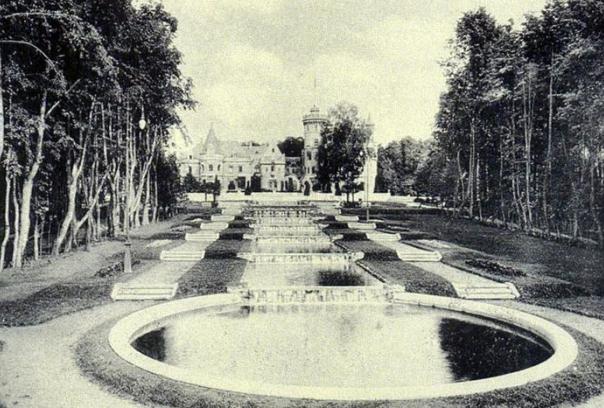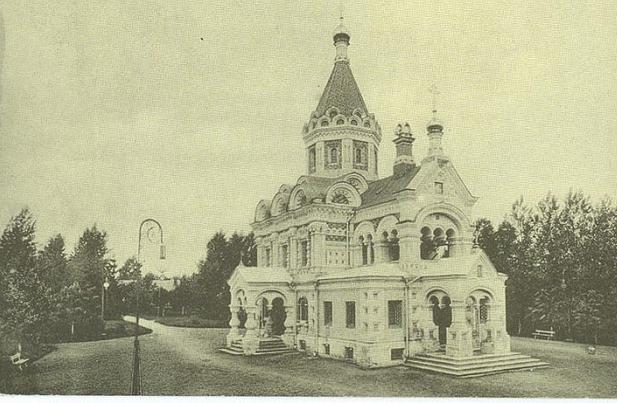Perhaps today the main attraction of the Vladimir region, the fabulous neo-Gothic castle of Khrapovitsky, can be said to be under the rule of evil spells, from which you need to find the magic spell of salvation.
Interesting places of the region
Many attractions of the Vladimir region are famous throughout the world. There are many relics that you can see, because this includes the cities of the Golden Ring of Russia, historical monuments of Vladimir-Suzdal Rus are preserved here. Evidence of people's lives over 25 million years ago, the Upper Paleolithic site, is found in these places. The 12th-13th centuries saw the heyday and strengthening of the Principality of Vladimir-Suzdal, it occupied a dominant position and took priority over the Russian lands. The city of Vladimir was the capital of North-Eastern Russia. Today in Vladimir, which is famous for its churches, you must definitely visit the Assumption Cathedral, see the Golden Gate through which the entrance to the city, the white-stone Dmitrievsky Cathedral, the Mother of God-Nativity Monastery was made. In the region - to see the unique cable-stayed bridge over the Oka River in the Murom region, visit the Suzdal Kremlin and the Cathedral of the Nativity of the Blessed Virgin Mary, a UNESCO World Heritage Site.
Path to the castle
Thousands of tourists annually visit these places. All attracts the estate of Khrapovitsky. How to get to the place, many people find out long before the trip. This information is incredibly important. Between the cities of Vladimir and Murom is the small village of Muromtsevo. Khrapovitsky Castle will tell its story here. You can get from Vladimir by any regular bus bound for Sudogda, Krasnaya Gorbatka or Murom. Get off at the bus station in Sudogda, and then walk about 3 km on foot. By car, in the same way, upon reaching Sudogda, move along the main street of Lenin, cross the bridge across the Sudogda River. At the fork in the village of Krasny Khimik, turn right, get to Muromtsevo. Our guideline is the yellow gate with the inscription "technical school" and a bus stop. We call in at this gate. A real Gothic palace awaits us behind them - the Khrapovitsky castle, whose photos look like shots from an old film.
Clan Khrapovitsky
The Khrapovitsky family is well-known and ancient, listed in the sixth genealogy book of Russian noble families. The Khrapovitsky coat of arms is a shield divided into four parts, which shows two lilies with interlacing stems: one flower looks down and the other up. Lily was definitely considered a symbol of the genus, the image of a flower can be seen on the facade, on windows, fireplaces and bars. The emblem is crowned with a noble helmet with a crown and peacock feathers, among which you can see a silver lily. Since the 17th century, the territory of the estate, in which the Khrapovitsky castle will appear in the future, belonged to the noble family of the Khonenevs. In the 19th century, the village of Muromtsevo passed into the possession of Ivan Khrapovitsky, who married a representative of the Khonenev clan. Khrapovitsky was a secret state adviser and governor of the St. Petersburg province, came from the ancient Polish-Belarusian aristocratic family of Gozdov, his ancestors accepted Russian citizenship after the lands of the former Commonwealth became part of Russia.
Vladimir Semenovich Khrapovitsky
In 1884, the territory of the estate was inherited by Vladimir Semenovich Khrapovitsky, a hussar colonel. The count inherited wonderful lands where a dense forest rustled. The richness of nature prompted him to engage in the sale of wood. As a result, Khrapovitsky becomes the country's largest timber merchant. But at that time the estate inherited was in decline, in the center stood an old wooden manor house, and around was a neglected park. The count enthusiastically set about restoring the estate and building a new main house. So, over time, a luxurious Khrapovitsky estate appeared here.
The history of the castle
Local tradition says that Khrapovitsky, after visiting France, was impressed by the beauties of local castles. The French challenged, saying that Russia has never had such beauty. As the saying goes, if this is not true, it is well thought out. And after a while in the Vladimirovsk region a neo-Gothic palace grew up with a magnificent park and more than 70 buildings on an area of 40 hectares of land. At the time of construction, in 1884, this creation of the architect Pyotr Samoilovich Boytsov was a triumph of architectural and landscape art, despite the fact that at that time in Russia it was not the Gothic style that dominated, but the eclectic style. Electricity, water supply, sewage, central heating, a telephone and a telegraph were conducted here. Ponds, greenhouses, fountains, and the arboretum were laid out on a huge adjoining territory. A railway track 41 km long was specially built; the estate was connected to the Murom railway. A forest was taken out along this road. And, they say that the fruits from the gardens of the estates supplied the entire Moscow region. The Khrapovitsky estate was designed to adorn the county and all of Russia.

General view of the castle of Khrapovitsky
According to the original design, Khrapovitsky Castle should consist of two floors, with a cascade of ponds in front of the building. The architect Boytsov brought it to life, and in 1906, on the right, an unknown architect completed a four-story wing with a beautiful tower in the English style. Near the castle, several dozens of service buildings were built in the same style, among them - a summer theater, a boat station, a marina, a horse yard, a place for an orchestra, a house for the manager, a water tower. Ponds gurgled around, the cascade of which ended with a magnificent lake, the trees rustled in the park, gardens bloomed, there was also a magnificent arboretum of 9 hectares with more than 70 species of rare trees.
Interior decoration
Today, nothing remains of the rich interior of the castle. And when it was very expensive and elegant, ranging from tiles and marble stairs to rich interior decoration. The castle had more than 80 interior rooms, each of which had its own name and purpose, each had expensive furniture ordered from the best furniture makers, the interior was decorated with expensive paintings, vases, tapestries, carpets, porcelain, sculptures by Bott, mirrors and bronze from Ebert , Cutlery from Faberge. The "mirror" room was decorated with Venetian mirrors, today only empty recesses in the brick walls remind of them.
Life in a fairytale castle
The Khrapovitsky estate (Vladimir region) overnight turned into a favorite place to visit metropolitan aristocrats, local industrialists, everyone was warmly welcomed here, staged splendid balls and receptions in the castle, nature tours were organized in the park and gardens, boat trips. On the shore of the pond, a specially created count orchestra played, which was his pride. Also an important merit of the count was the theater. It was a miniature version of the Moscow Maly Theater, built of wood. Both in the orchestra and in the theater were the pupils of the local music school. Khrapovitsky also helped decaying theater groups, offering them work and shelter. The theater played not only performances, but also arranged musical evenings and played classical music. Khrapovitsky was very fond of dogs, a special room was equipped for them, and there was a window in his office so that he could look at his pets at any time. It is said that a burial place was reserved for the pets that had gone to another world, where the owner laid down memorial granite slabs. The stables had the best horses. The building itself, many who were here for the first time, was confused with the master's house, it was so beautiful and impressive. The countess devoted much time to animals and flowers in gardens and greenhouses. The Khrapovitsky were engaged in charity work in their county; comprehensive schools were built and fully maintained at their expense. They also helped a lot of peasants from the surrounding villages.

Church of St. Alexandra
In 1899, Bishop of Vladimir allowed the construction of a church in honor of the Holy Queen Alexandra on the land of Khrapovitsky. The reasons for the construction were the need for the existence of a church close to the place of residence and work of a large number of people, as well as the strengthening of relations between Khrapovitsky and the imperial family. Fighters also became an architect, so the temple is designed in the same style as the rest of the buildings, but with elements of Russian late Baroque. The interior of the temple was equally magnificent. Silver and gold here are from Faberge, church utensils are from Sokolov’s house. Today in the church divine services have resumed.
The current state of the estate
Of course, planning the construction of his castle, Khrapovitsky could not foresee the events of 1917 and the revolution. When everything had already happened, his only desire was to save his brainchild from destruction and plunder. And he wrote a letter to the descendants and transferred the estate to the state without permission. But fate decided otherwise. Material values and paintings were transferred to the museums of the Vladimir region, and the interior of the castle was plundered. Here in Soviet times there was a forestry technical school, then a dormitory, and then two fires altogether. From the buildings around the castle, for the most part, only ruins remained. The fate of the owners of the castle is no less tragic - they died in exile in France, in poverty and in alarm for their estate. Unfortunately, the Khrapovitsky spouses did not have children. It is said that a pair of swans lived on the lake until 1925, possibly hoping to still see their returning masters. Today they say that the reconstruction of the estate has finally begun. What happened to her during the years of Soviet power is an irreparable loss for posterity. Let's hope that the work will be successful, the estate of Count Khrapovitsky will become a protected historical heritage and will make many generations of Russian people proud of his land.